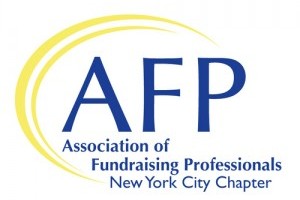The Association of Fundraising Professionals (AFP) cannot grow the economy, but it can work toward preventing governmental barriers to generating income. That was the message of Jason Lee, general counsel of AFP, to those in attendance at Wednesday’s annual meeting of the New York City chapter.
Fundraisers have earned two major victories in just the past month, Lee said. The first win was the Internal Revenue Service’s (IRS) withdrawal of a gift-substantiation proposal that would have given required nonprofits collect donors’ Social Security numbers for gifts of $250 or more. AFP provided input against the proposal and grassroots efforts also came up in opposition. Several attendees raised their hands when asked whether they provided comments to the IRS.
The second victory came with Individual Retirement Account (IRA) charitable rollovers being made permanent. Individuals ages 70 ½ and older have previously been able to make donations to organizations through their IRA without incurring tax, but the temporary nature of the mechanism had made it difficult for donors and fundraisers to plan, Lee said.
Lee predicted a lot of political posturing during the election year with tax reform following in 2017. This year, as such, will be a time for advocacy. The attorney advised attendees to keep track of candidates’ tax plans.
5 Points From The Panel
Wednesday’s meeting concluded with a panel featuring Michael Haberman, managing director and northeast region executive, global philanthropy at JPMorgan Chase; Carmel Owen, vice president of leadership gifts at The New York Women’s Foundation; and Marcie Passarella, director of global citizenship and sustainability at PepsiCo. Key takeaways from the discussion included:
* Know your audience. Funders have a strategy and a sense of what they would like to accomplish through philanthropy, Passarella said, so keep that in mind and do not try to convince the funder that your organization fits when it doesn’t. While it is inappropriate to try to fit a square peg in a round hole, Haberman said that fundraisers might send funders updates on the organization every few months to see if missions align down the road.
* Do your homework. Demonstrate that you understand the funder’s background and goals as well as those of the representative you are speaking with. In other words, know your audience, according to Haberman.
* Understand where funders are coming from. Big corporations are not involved in fundraising simply for the philanthropy, Passarella said. The future of corporate missions and perception are also paramount. “We don’t do things for visibility,” Haberman added. “But we do try to get visibility for the things that we do.”
* Realize the importance of metrics. A small staff isn’t an excuse for not collecting data, Haberman said. The kind of data is also important. JPMorgan Chase, for instance, is less interested in how many training workshops an organization provides than how many individuals were placed in and retained jobs. Organizations do not need to have measurables for everything, but they do need measurables for the important things, Passarella added. Looking toward the work of peers is a means of identifying key pieces of data.
* The future is in collaboration. Owen used a Bronx job-training program as an example of such collaboration as the program ties in to area schools, day care providers and senior centers. In the Lower East Side of Manhattan, several workforce training providers have come together to form a centralized place for job development, Haberman said, adding that JPMorgan Chase is in search of similar opportunities.
Changing of the Guard
Susan Shattuck took her post as the New York City chapter’s president early on in the meeting. Mark Hefter, immediate past president; Gary Laermer, president elect; Steven G. Jacobson, treasurer; and Laura Fredricks, secretary, join Shattuck in chapter leadership.
